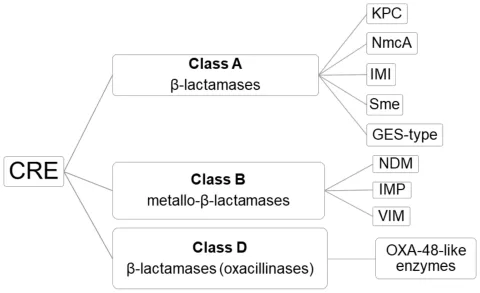Salmonella enterica source attribution represents a critical area of research in tackling foodborne illness effectively. As one of the predominant pathogens responsible for salmonellosis in the United States, understanding the origins of these bacteria is essential for informing public health interventions. Recent advances in whole-genome sequencing have revolutionized how we identify and attribute the sources of Salmonella outbreaks, helping researchers apply sophisticated techniques like random forest models in their analysis. With a proven out-of-bag accuracy of 91%, these prediction models can reveal the significant role of various food items, such as chicken and vegetables, in human infections. By leveraging this genomic data, we can enhance food safety measures and proactively prevent future cases of salmonellosis, ultimately safeguarding public health.
Identifying the sources of Salmonella infections is pivotal not only for controlling outbreaks but also for understanding the broader implications of foodborne diseases. Through modern subtyping methods, researchers can track and pinpoint the origin of Salmonella enterica in the food supply chain. The application of genetic sequencing techniques simplifies the complexities surrounding sporadic illnesses linked to salmonellosis, allowing scientists to employ predictive modeling techniques such as the random forest algorithm. By establishing clear links between contaminated food sources and infection cases, public health authorities can craft more informed prevention strategies. This comprehensive approach to source attribution fosters a more robust framework for ensuring food safety and minimizing the incidence of foodborne illnesses.
Understanding Salmonella Enterica and Its Impact on Public Health
Salmonella enterica is a gram-negative bacterium that poses a significant health threat, being a leading cause of foodborne illness in various populations, particularly in the United States. Each year, millions of individuals suffer from salmonellosis, a gastrointestinal infection stemming from the ingestion of contaminated food or water. Due to the bacterium’s prevalence in various food sources, including poultry, eggs, and produce, tracking and mitigating outbreaks are crucial for public health safety. The ability to pinpoint specific sources of contamination is impeded by the fact that many cases of salmonellosis are not linked to recognized outbreaks, thus complicating effective prevention strategies.
Recognizing the role of whole-genome sequencing in improving our understanding of Salmonella enterica is vital. This advanced method allows researchers to analyze the genetic material of Salmonella strains, providing insight into their origins and transmission pathways. In a landscape marked by increasing antibiotic resistance and rising food safety concerns, the effective application of genomic data facilitates enhanced tracking of Salmonella sources and the development of targeted interventions to reduce foodborne illnesses.
The Role of Whole-Genome Sequencing in Salmonella Source Attribution
Whole-genome sequencing (WGS) has revolutionized the field of microbial epidemiology, particularly in the attribution of Salmonella enterica to specific food sources. By analyzing the genomic data from 18,661 Salmonella isolates, scientists can understand the genetic variations that distinguish strains associated with various food items. This sophisticated approach surpasses traditional methods, offering unrivaled accuracy in identifying the source of infections. For instance, the application of WGS data in conjunction with statistical models has enabled the prediction of human salmonellosis cases with high precision, identifying chicken as a significant contributor in over 34% of instances.
WGS is complemented by analytical techniques such as random forest modeling, which enhances the predictive power for food source attribution. By employing these methods, researchers can discern patterns and associations between genomic characteristics of isolated strains and their sources, such as vegetables and meats. This integration of genomic insights into epidemiological frameworks not only advances the understanding of salmonellosis transmission but also informs food safety policies, ensuring that effective measures can be implemented alongside ongoing surveillance efforts.
Utilizing Random Forest Models for Salmonellosis Prediction
Random forest models are a pivotal tool for predicting the sources of salmonellosis, leveraging vast datasets generated from whole-genome sequencing. Unlike conventional statistical methods that may overlook complex interactions within data, random forest algorithms excel at handling diverse features and non-linear relationships, making them suitable for analyzing the intricate genomic variations observed in Salmonella isolates. Through this method, researchers can accurately classify and predict the likely food source of Salmonella infections based on the genomic signatures associated with each isolate.
These predictive models have yielded impressive results, with an overall accuracy of 91% in classifying Salmonella sources. The highest accuracy, observed at 97%, was attributed to chicken, underscoring its prominence as a major source of foodborne illness. Furthermore, by applying these models to human-derived Salmonella isolates with unknown exposures, the data revealed that a significant proportion of infections could be traced back to recognizable food sources, highlighting the efficacy of random forest approaches in real-world epidemiological scenarios.
Significance of Chicken and Vegetables in Salmonella Infections
The findings from recent studies emphasizing chicken and vegetables as major sources of Salmonella infections bear significant implications for food safety. With chicken accounting for more than 34% of human isolates and vegetables for 30%, it is evident that these food categories require stringent monitoring and safety measures. Contamination can occur at various stages, from farm to processing and distribution, necessitating a comprehensive approach to mitigate risks associated with these foods.
The relevance of these insights extends beyond mere statistics; they underscore the need for robust public health policies that focus on improving hygiene practices in food production and handling. Incorporating genomic surveillance and predictive modeling into regulatory frameworks can enhance the ability to respond to outbreaks effectively and prevent future incidences of salmonellosis linked to chicken and vegetables.
Advancements in Food Safety through Genomic Surveillance
Genomic surveillance represents a transformative shift in how public health officials approach food safety issues, especially regarding Salmonella enterica. By harnessing the power of whole-genome sequencing, regulatory agencies can monitor microbial strains circulating in the food supply more accurately and promptly. This real-time data monitoring allows for swift intervention strategies that can prevent potential outbreaks before they escalate.
Moreover, integrating genomic data with epidemiological models further enhances risk assessment capabilities. Insights garnered from such comprehensive analyses can inform public health campaigns aiming to educate consumers about safe food practices, contributing immensely to reducing the incidence of foodborne illnesses. Overall, continuous advancements in genomic surveillance are fundamental to achieving effective food safety outcomes and ensuring public health protection.
The Impact of Sporadic Salmonella Cases on Foodborne Illness Data
Understanding sporadic cases of salmonellosis is critical as they make up a large portion of foodborne illnesses reported each year. These cases often lack clear links to specific food sources, complicating efforts to establish effective public health interventions. The challenge is compounded by the fact that many individuals with Salmonella infections do not seek medical attention, leading to underreporting and insufficient data on the actual prevalence of these cases.
To address this issue, employing advanced analytical techniques such as machine learning and predicting models can shed light on the origins of sporadic Salmonella infections. By systematically analyzing genetic data alongside epidemiological trends, researchers are working towards identifying potential sources that contribute to these sporadic cases. Improved data integrity and understanding the food source attribution ultimately enhance the public health response to Salmonella outbreaks, informing targeted prevention efforts.
Food Safety Measures to Combat Salmonella Enterica
Effective food safety measures are critical in reducing the risk of Salmonella enterica infections across the food supply chain. Essential strategies include rigorous monitoring of food production practices, improved sanitation protocols, and comprehensive education for food handlers about the risks of cross-contamination. These preventive measures are particularly important in environments where raw foods, such as chicken and vegetables, may come into contact with pathogens.
Additionally, implementing systematic testing and traceability systems in the food industry can enable rapid identification and control of potential contamination sources. By establishing robust food safety standards and ensuring compliance through inspections, the likelihood of Salmonella entering the food supply can be significantly lowered, thus protecting public health and ensuring consumer confidence.
The Future of Salmonella Research and Public Health Policy
Looking ahead, ongoing research into Salmonella enterica and its various strains will be crucial for shaping future public health policies. As genomic technologies and computational models continue to evolve, they hold promise for delivering even more precise insights into the transmission dynamics of foodborne illnesses. The emphasis on utilizing data-driven approaches will allow public health authorities to allocate resources and interventions more efficiently.
Collaboration between researchers, policymakers, and food industry stakeholders will further enhance the effectiveness of public health initiatives aimed at combating salmonellosis. By fostering partnerships that focus on shared goals of improving food safety and reducing illness incidence, society can look forward to a healthier future free from the burdens of foodborne diseases caused by Salmonella enterica.
Frequently Asked Questions
What role does Salmonella enterica source attribution play in understanding foodborne illness?
Salmonella enterica source attribution is crucial for identifying the origins of foodborne illnesses. By linking specific Salmonella infections to food sources, public health officials can target prevention efforts and improve food safety measures to reduce outbreaks.
How does whole-genome sequencing contribute to Salmonella enterica source attribution?
Whole-genome sequencing enhances Salmonella enterica source attribution by allowing researchers to analyze genetic differences in bacterial strains. This detailed genetic analysis aids in accurately tracing the source of salmonellosis, making it easier to identify potential risk factors in the food supply.
What is the significance of using a random forest model for predicting Salmonella enterica sources?
The random forest model is significant in predicting Salmonella enterica sources as it utilizes a combination of genetic data from multiple isolates to improve accuracy. In this study, it achieved a prediction accuracy of 91%, indicating its effectiveness for foodborne illness modeling.
How can salmonellosis prediction be improved through source attribution methods?
Salmonellosis prediction can be improved through robust source attribution methods, such as whole-genome sequencing and machine learning models. These approaches provide clearer insights into which food sources are most likely contributing to human infections, enabling more effective food safety interventions.
What implications do the findings on Salmonella enterica source attribution have for food safety policies?
Findings on Salmonella enterica source attribution highlight the need for reinforced food safety policies, particularly regarding the handling and processing of chicken and vegetables, which are major sources of salmonellosis. By focusing on these areas, regulatory bodies can develop targeted strategies to reduce foodborne illnesses.
What percentage of human Salmonella infections can be attributed to chicken according to Salmonella enterica studies?
According to the study, more than 33% of human Salmonella infections can be attributed to chicken. This significant figure underscores the importance of maintaining stringent food safety practices in poultry production and handling.
Why is it challenging to predict Salmonella enterica sources in sporadic cases?
Predicting Salmonella enterica sources in sporadic cases is challenging because these infections often occur without clear outbreak connections. This complexity necessitates advanced modeling techniques, such as those involving whole-genome sequencing and random forest analytics, to accurately identify potential sources.
How has the application of genomic data impacted the understanding of foodborne illness source attribution?
The application of genomic data has revolutionized the understanding of foodborne illness source attribution by providing highly detailed genetic information that can be linked to specific food sources. This advancement enhances the ability to track infection pathways and informs public health responses to salmonellosis.
What key food sources contribute to salmonellosis as identified in Salmonella enterica research?
Salmonella enterica research has identified chicken and vegetables as key contributors to salmonellosis. The study indicated that chicken accounted for approximately 34% and vegetables for around 30% of human Salmonella infections.
What is the importance of feature selection in the random forest model for Salmonella enterica source attribution?
Feature selection is important in the random forest model for Salmonella enterica source attribution as it identifies the most influential genetic markers for predicting food sources. This efficiency improves the model’s accuracy and focuses research efforts on critical genetic loci associated with salmonellosis.
| Section | Key Points |
|---|---|
| Abstract | Salmonella enterica causes significant foodborne illnesses; using a supervised random forest model achieved 91% accuracy in source attribution, with chicken being the highest at 97%. Over 33% of cases linked to chicken. 27% linked to vegetables. |
| Introduction | Understanding the sources of Salmonella enterica is crucial for effective prevention and policy-making. |
| Methods | Utilized 18,661 Salmonella isolates for the random forest model; sourced data from NCBI and the Foodborne Diseases Active Surveillance Network during 2014-2017. |
| Results | Model showed 91% overall accuracy; chicken (34%) and vegetables (30%) were primary sources of human infections. |
| Discussion | Application of genomic data analysis to enhance foodborne illness source attribution is vital for public health policy. |
Summary
Salmonella enterica source attribution is essential in identifying the origins of foodborne illnesses, which pose a significant public health risk. This study demonstrates the effectiveness of whole-genome sequencing and predictive modeling in attributing sources to Salmonella infections, highlighting the critical roles of chicken and vegetables as primary contributors. Enhancing our understanding of these sources can guide targeted prevention strategies to mitigate the risk of salmonellosis.
The content provided on this blog (e.g., symptom descriptions, health tips, or general advice) is for informational purposes only and is not a substitute for professional medical advice, diagnosis, or treatment. Always seek the guidance of your physician or other qualified healthcare provider with any questions you may have regarding a medical condition. Never disregard professional medical advice or delay seeking it because of something you have read on this website. If you believe you may have a medical emergency, call your doctor or emergency services immediately. Reliance on any information provided by this blog is solely at your own risk.








